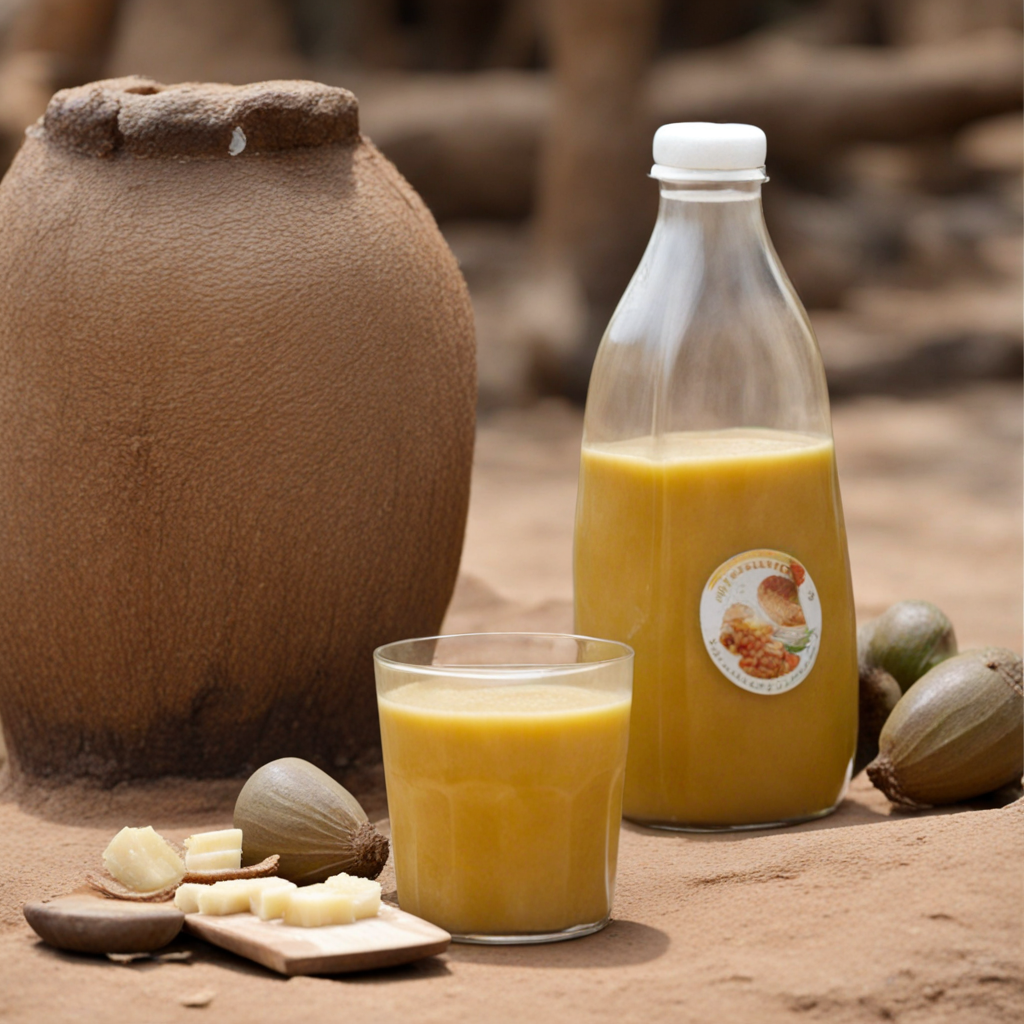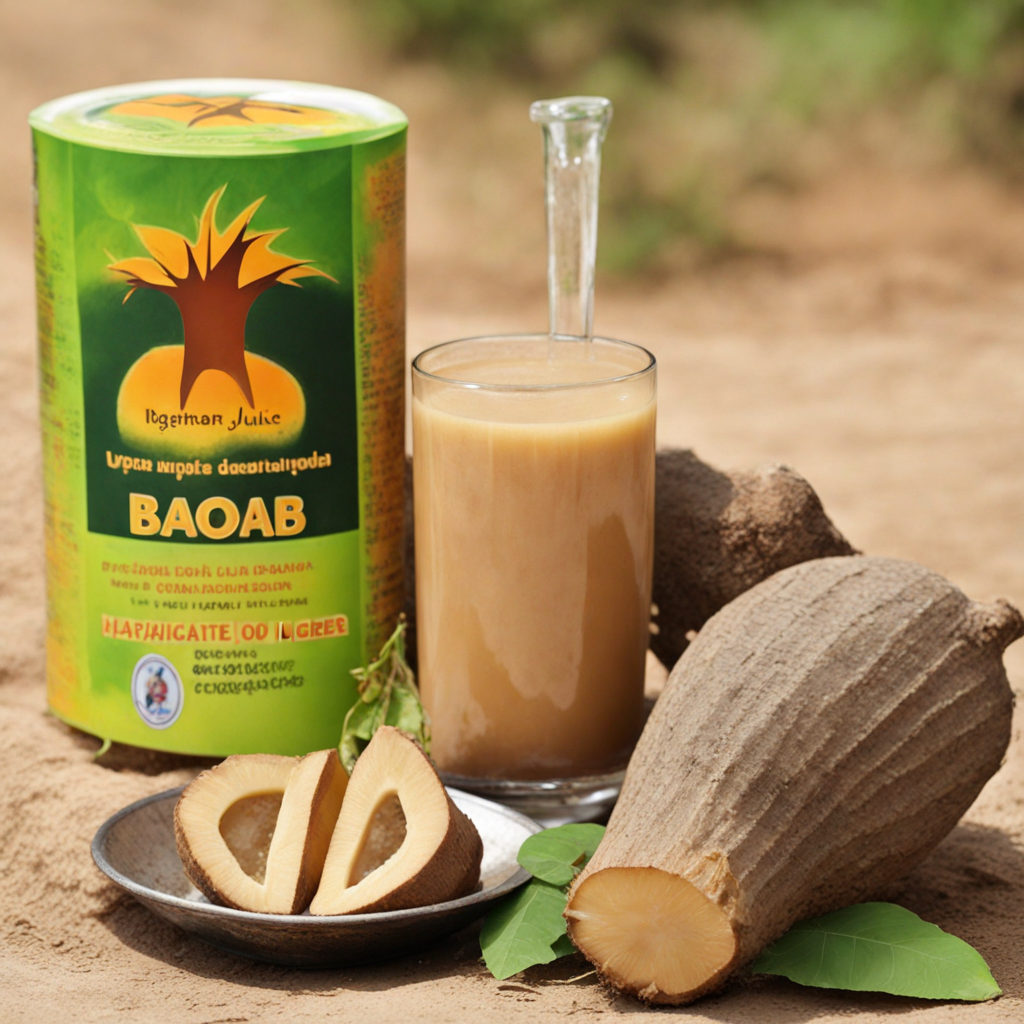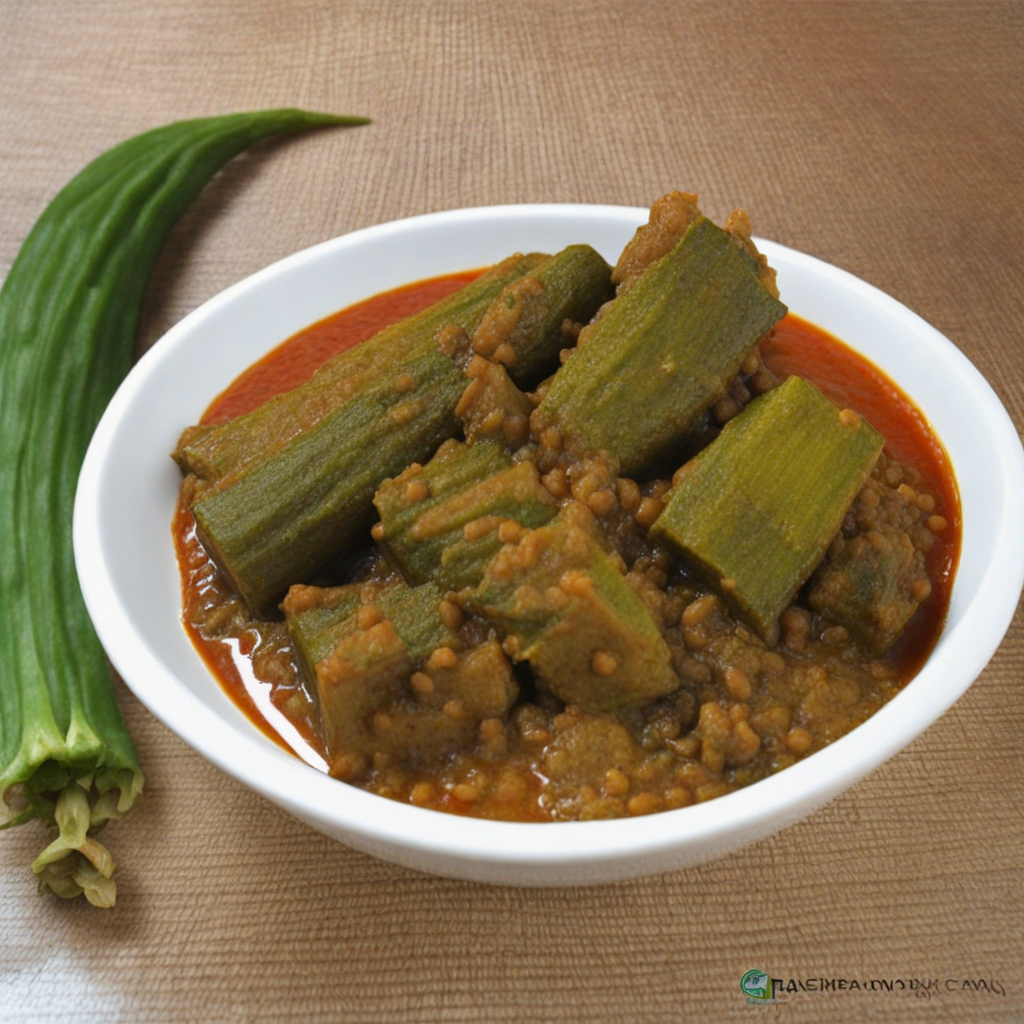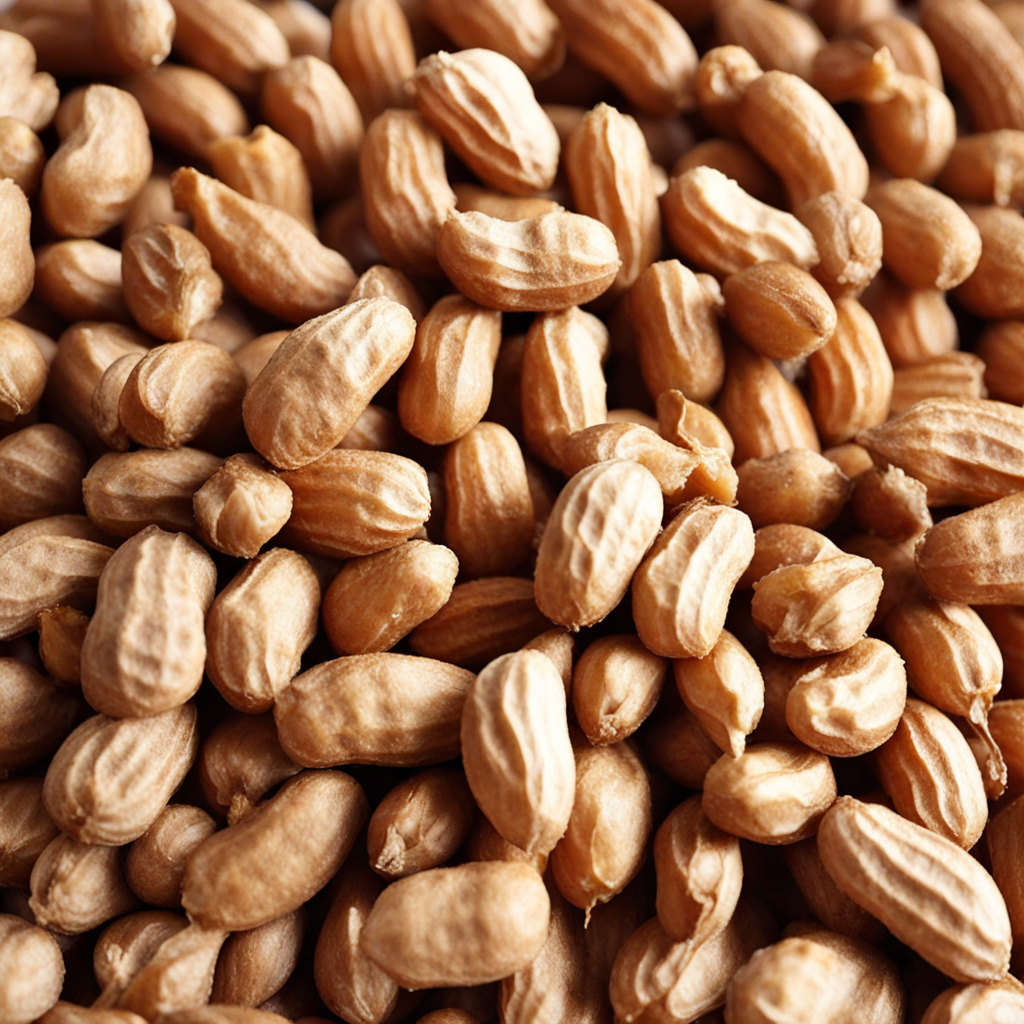Baobab Juice
Baobab juice, a refreshing beverage from Niger, is crafted from the fruit of the baobab tree, often referred to as the "Tree of Life." The baobab fruit is characterized by its hard shell and powdery white pulp, which has a unique tangy flavor. When transformed into juice, this pulp is combined with water and sometimes sweetened with a touch of honey or sugar, resulting in a drink that is both revitalizing and nutritious. The juice has a pale, creamy appearance, inviting you to take a sip and experience its vibrant taste profile. The flavor of baobab juice is an intriguing blend of sweet, tart, and citrus-like notes, reminiscent of a mix between grapefruit and tamarind. Its natural acidity offers a zesty kick that can awaken your palate, making it an excellent thirst quencher, especially in the hot climate of Niger. Rich in vitamin C, antioxidants, and essential minerals, this juice not only tantalizes your taste buds but also provides a boost to your immune system, adding to its appeal as a healthful choice. Baobab juice is often enjoyed as a standalone beverage, but it can also be incorporated into smoothies or cocktails for an extra layer of flavor. In Niger, it is a popular drink during social gatherings and celebrations, connecting people through the shared enjoyment of this local delight. As you explore this unique beverage, you'll find that baobab juice is not just a drink; it is an experience that embodies the rich cultural heritage and natural bounty of Niger.
How It Became This Dish
An Engaging History of Jus de Baobab from Niger #### Introduction Jus de Baobab, or baobab juice, is a refreshing drink made from the fruit of the baobab tree, known scientifically as Adansonia digitata. This remarkable tree, often referred to as the "tree of life," is native to Africa and is particularly prevalent in Niger, where it holds deep cultural significance and provides a variety of resources for local communities. The history of Jus de Baobab is intertwined with the traditions, survival, and resilience of the people in Niger, reflecting a rich tapestry of cultural practices and ecological knowledge. #### The Baobab Tree: A Symbol of Resilience The baobab tree is an iconic feature of the African landscape, easily recognized by its massive trunk and distinctive silhouette. It can live for over a thousand years and is often referred to as the "monkey bread tree," due to the fruit's popularity among local fauna. The tree's ability to store water in its trunk allows it to survive in arid climates, making it a critical resource for many communities in Niger and beyond. The baobab fruit is oval or round, with a hard shell that encases a dry, powdery pulp rich in vitamins and minerals. This pulp is high in Vitamin C, antioxidants, and dietary fiber, making it a superfood that has garnered international attention in recent years. The pulp can be harvested and processed into a juice, which is both refreshing and nutritious, and is often consumed as a beverage or used in cooking. #### Historical Context The historical significance of Jus de Baobab can be traced back to ancient African societies. The fruit has been consumed for centuries, with evidence suggesting that it was used by various ethnic groups for its nutritional properties and medicinal benefits. Traditional healers in Niger and other parts of Africa have utilized baobab fruit to treat ailments ranging from fevers to digestive issues, showcasing the deep-rooted knowledge of herbal medicine that characterized many indigenous cultures. In the context of Niger, the baobab tree is more than just a source of food; it is often associated with various myths and legends. In many cultures, the baobab is viewed as a symbol of strength and endurance. It is common to find baobab trees at the center of village life, serving as gathering places for community events, storytelling, and rituals. The process of making Jus de Baobab often becomes a communal activity, where families come together to harvest the fruit, share stories, and celebrate their heritage. #### Cultural Significance In Niger, Jus de Baobab carries profound cultural significance. The drink is not merely a refreshment; it embodies the spirit of communal sharing and the connection to the land. During festivals and celebrations, Jus de Baobab is often served as a symbol of hospitality and warmth. It is customary for hosts to offer this drink to guests, reflecting the values of generosity and community that are deeply ingrained in Nigerien culture. Moreover, the drink plays a vital role in local economies. The baobab fruit is harvested, processed, and sold in local markets, providing a source of income for many families. Women, in particular, are often the primary harvesters and sellers of baobab products, empowering them economically and socially. This has led to the rise of cooperatives and initiatives aimed at promoting sustainable harvesting practices that honor the ecological integrity of the baobab tree while enhancing the livelihoods of local communities. #### Development Over Time As globalization has influenced food systems worldwide, Jus de Baobab has begun to gain recognition beyond its geographical roots. In recent years, there has been a surge in interest in superfoods, with baobab pulp being hailed for its health benefits. This has opened up new markets for Jus de Baobab, allowing it to reach international consumers who are increasingly looking for natural, nutrient-dense options. The rise of health consciousness has prompted food innovators to experiment with baobab in various products, including smoothies, energy bars, and even alcoholic beverages. This shift has led to a new narrative around Jus de Baobab, transforming it from a traditional drink into a trendy staple in health-focused diets. However, this commercialization raises questions about sustainability and cultural appropriation, as the traditional knowledge surrounding the preparation and significance of Jus de Baobab may become overshadowed by modern marketing practices. #### Challenges and Sustainability Despite its growing popularity, the baobab tree and the production of Jus de Baobab face challenges. Climate change, deforestation, and land use changes pose significant threats to the baobab ecosystem. As urbanization increases and traditional practices wane, there is a risk that the cultural heritage associated with Jus de Baobab may be lost. To combat these challenges, various NGOs and local organizations in Niger are working to promote sustainable harvesting practices and educate communities about the ecological importance of the baobab tree. By emphasizing the need to balance economic opportunities with environmental stewardship, these initiatives aim to ensure that future generations can continue to enjoy and celebrate Jus de Baobab. #### Conclusion Jus de Baobab is more than just a drink; it is a vibrant cultural artifact that tells the story of the people of Niger and their relationship with the land. Rooted in centuries of tradition, this refreshing beverage embodies the values of community, resilience, and sustainability. As it continues to evolve in the global marketplace, it is essential to acknowledge and respect its origins, ensuring that the cultural significance of Jus de Baobab remains at the forefront of its story. The future of this delightful drink, and the baobab tree itself, ultimately depends on a collective commitment to preserving the rich heritage and ecological integrity that it represents.
You may like
Discover local flavors from Niger







